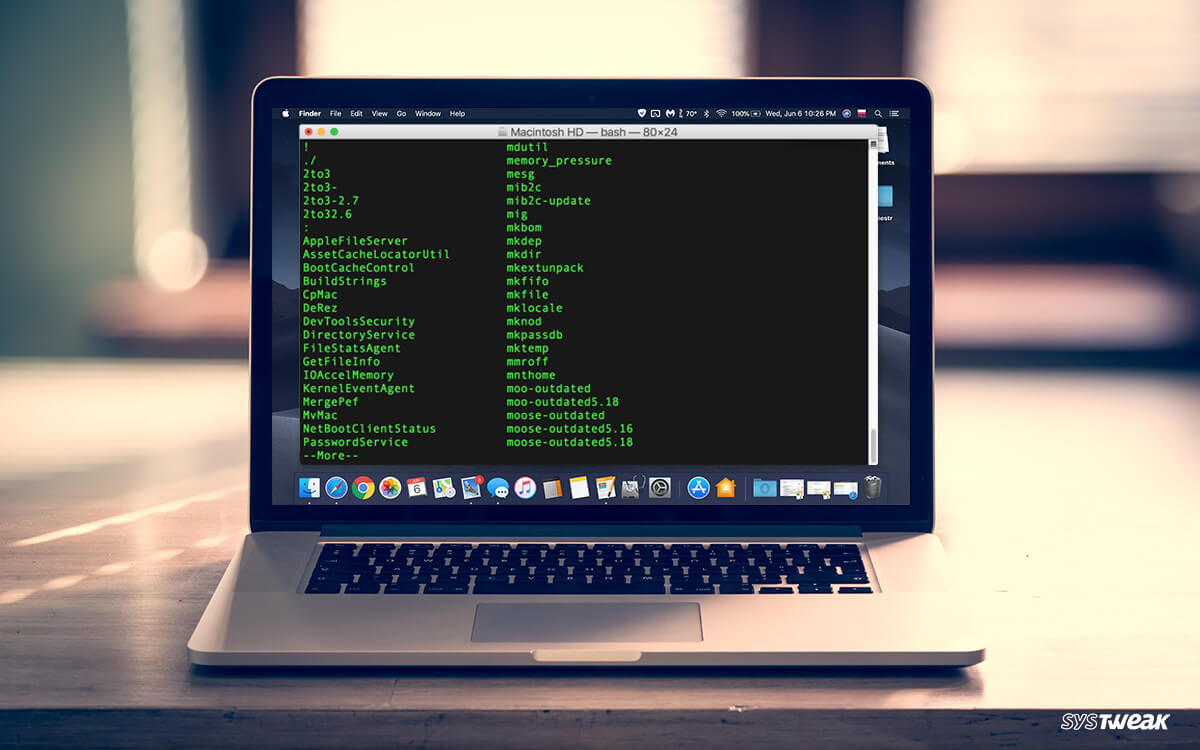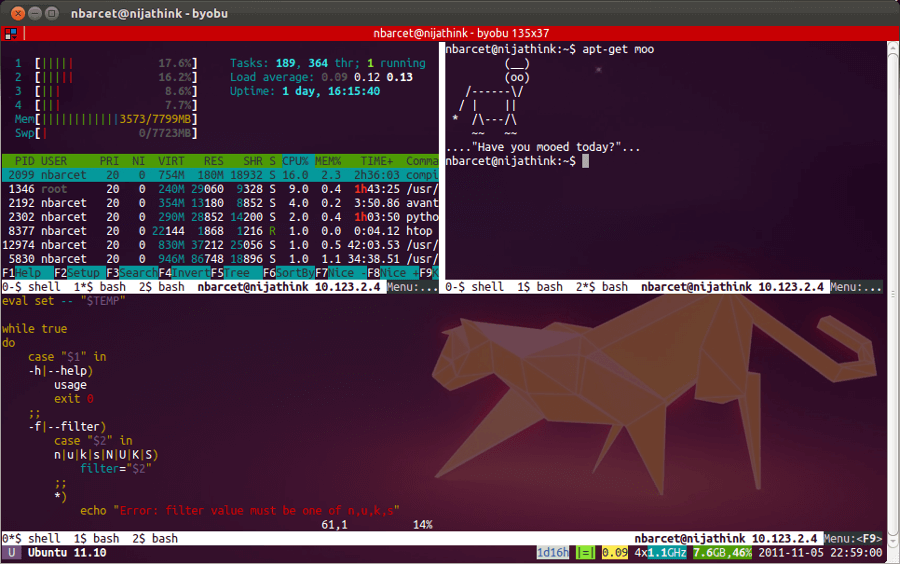Terminals For Mac
Terminal User Guide
Each window in Terminal represents an instance of a shell process. The window contains a prompt that indicates you can enter a command. The prompt you see depends on your Terminal and shell preferences, but it often includes the name of the host you’re logged in to, your current working folder, your user name, and a prompt symbol. For example, if a user named michael is using the default zsh shell, the prompt appears as:

This indicates that the user named michael is logged in to a computer named MacBook-Pro, and the current folder is his home folder, indicated by the tilde (~).
PowerShell (including Windows PowerShell and PowerShell Core) is a task automation. Windows PowerShell is an extensible command-line shell and associated scripting.
Open Terminal
On your Mac, do one of the following:
Click the Launchpad icon in the Dock, type Terminal in the search field, then click Terminal.
In the Finder , open the /Applications/Utilities folder, then double-click Terminal.
Quit Terminal
In the Terminal app on your Mac, choose Terminal > Quit Terminal.
Quit a shell session
In the Terminal app on your Mac, in the window running the shell process you want to quit, type
exit, then press Return.
This ensures that commands actively running in the shell are closed. If anything’s still in progress, a dialog appears.
If you want to change the shell exit behavior, see Change Profiles Shell preferences.
Terminal is a built-in tool for macOS, but not all Mac users are aware of its usefulness. It is a powerful command-line interface and can be used to do a lot of things on your Mac device without stress. With Terminal, all you have to do is simply input a command to get the desired output on your Mac.
Contents


- 2 Commands for Terminal
- 3 Final Verdict
Setting up Terminal Commands on Mac
Before you can start using Terminal commands, you need to first locate the command prompt on your Mac device. Locate the prompt by taking the following steps:
- Open a Finder window or double click on the Macintosh HD icon.
- Find and open the Applications folder.
- After that, double click on Utilities.
- Here, you will find the Terminal. Click on Open the Terminal.
After doing this, it will take you to a window that shows the name of your PC, your username, and a dollar sign ($). All the terminal commands discussed below can be typed into the command prompt. Press the return key to go back to the command prompt.
Commands for Terminal
Mac users who do know about the built-in feature are occasionally hesitant to use Terminal. Any typo in your command could cause damage to your macOS. As long as you are careful and double-check your work, however, you should have no problem.
Here are some basic Terminal commands that you can use on your Mac device.
Download today and get tracking! And it's all in a beautiful interface that fits right in with Mac OS X Tiger. Download today and get tracking! Best VPN Services for 2020.  Free download Package Tracker Package Tracker for Mac OS X 👍. Package Tracker 🤝 - Track multiple packages from any place at any time with Package Tracker 🤝. Mactracker provides detailed information on every Apple Macintosh, iPod, iPhone, and iPad ever made, including items such as processor speed, memory, graphic cards, supported OS versions, price, storage, and expansion options.
Free download Package Tracker Package Tracker for Mac OS X 👍. Package Tracker 🤝 - Track multiple packages from any place at any time with Package Tracker 🤝. Mactracker provides detailed information on every Apple Macintosh, iPod, iPhone, and iPad ever made, including items such as processor speed, memory, graphic cards, supported OS versions, price, storage, and expansion options.
Check The Server Response
Ping is one of the most useful Terminal commands with which every Mac user should be familiar. This command will help you check the server response speed of domains and IP addresses. To perform this command, type into the command terminal ping [insert URL or IP address].
Keep Your Mac From Falling Asleep
Many Mac users do not know that there is a command you can use to keep your Mac awake or “caffeinated” for a certain amount of time before it goes into sleep or screensaver. To set this command type caffeinate –t 200000 into the command terminal. The command means that your Mac will stay awake for 200,000 seconds.
Show or Hide Files
Sometimes you might be looking for a file that is hidden on your Mac. You can use the following command to find their location on your system. To show all hidden files on your Mac device, type as follows: defaults Write com.apple.finder AppleShowAllFiles –bool TRUE. Directly underneath, type killall Finder.
This command will bring out all hidden files on your Mac and allow you to either edit or delete them. You can also decide to hide these files again by simply replacing the TRUE with FALSE.
Duplicate Files Between Folders on Your Mac
The can avoid the stress of copying and pasting files between folders on your Mac by merely using the duplicate files between folders command. This is achieved by using the Ditto terminal command on your Mac device. In the Terminal command prompt, type in Ditto [Original Folder] [New Folder].
Note: if you have folders in different locations with the same name, you have to include -v after Ditto to be able to achieve the right result.
Check For MacOS Updates
Your Mac device is customarily configured to check for macOS updates on a weekly basis, but a simple Terminal command can change this setting: defaults write com.apple.softwareUpdate ScheduleFrequency –int 1. Change the integer (the number seen in the command) to any number of your choice. The number represents the number of days that your device will wait before checking for updates.
You can return to the default weekly check for updates with defaults write com.apple.softwareUpdate ScheduleFrequency –int 7. With this, you can be notified of your app updates or macOS updates more frequently.
Improve Your Mac’s Screenshots
Normally, when you take screenshots on your Mac device, you will notice that it usually adds a drop shadow. These shadows can lower the quality of your screenshots. You might want to turn off these shadows by using the Terminal command defaults write com.apple.screencapture disable-shadow –bool TRUE. Underneath what you just typed, include Killall SystemUIServer. After entering this command, there should be no drop shadows added to your screenshots again.
Final Verdict
Many Mac users depend on various app preferences to have total control over their system. Terminal commands allow you to have total control without having to do this. You can use any of the terminal commands above, and many more, to customize your Mac device.
Terminal For Macbook Pro
Related Posts:
